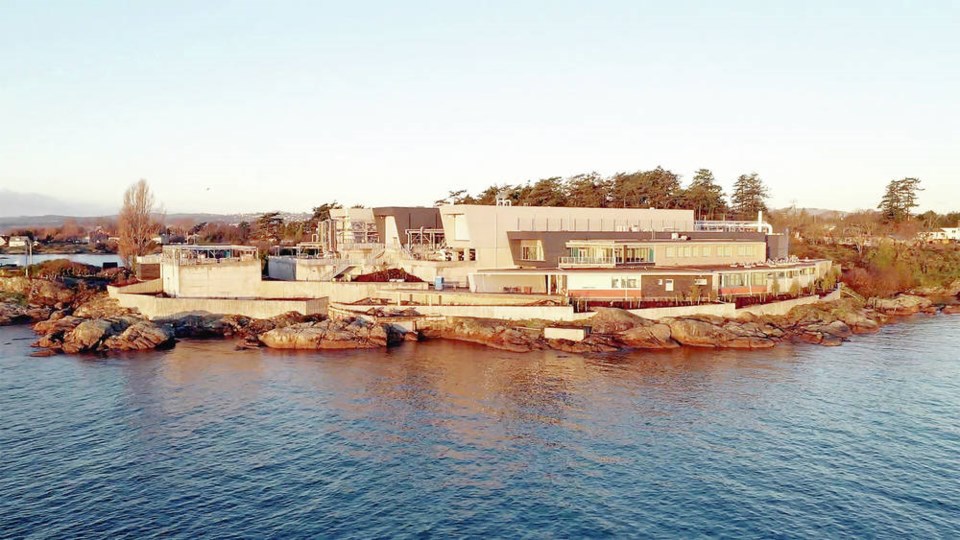Something’s not right with a major part of our new sewage treatment system.
The finished product of what we flush — the bio-solids — was supposed to be shipped to a cement plant in Richmond to burn as an alternative to coal.
But Lafarge Canada says it hasn’t been up to snuff.
So the Capital Regional District, which guided the $775-million, five-year project to completion this year, is spreading tonnes of bio-solids at Hartland Landfill while they figure out what’s wrong at the residual treatment facility.
Neighbours of Hartland, including Butchart Gardens, are voicing their concerns that burying bio-solids into the landfill with garbage poses health and environmental risks to nearby waterways, including Tod Creek, Durrance Lake and Saanich Inlet.
Plans approved by the CRD board and the Environment Ministry include shipping bio-solids to Lafarge. When the cement facility is closed for maintenance, estimated at about five weeks per year, the material is to be used as “bio-cover to capture fugitive landfill gases or a biological growth medium to enhance vegetative growth over closed landfill cells.”
Neither has happened.
“Due to the ongoing commissioning of the [residual treatment facility], the CRD has not yet implemented the short-term contingency plan of land application at Hartland Landfill for any bio-solids products,” says a report by Glen Harris, the CRD’s senior manager of environmental protection. “Rather, all de-watered residuals and dried Class A bio-solids have been deposited as controlled waste, and mixed with daily cover (and subsequently covered in municipal solid waste), respectively.”
What’s happening with the bio-solids is a concern for Hugh Stephens of the Mount Work Coalition, a group of citizens who formed a non-profit to protect Mount Work Regional Park, next to Hartland. Mount Work includes swimming areas, biking courses and hiking trails.
“If the brand new [residual treatment facility] cannot produce bio-solids to even the minimal standard, how is it safe to landfill it at Hartland and if, eventually, the product does meet Class A standards, how can we have any confidence that it is safe to spread?” Stephens said.
A pipe system moves raw sewage to the McLoughlin Point Wastewater Treatment Plant in Esquimalt, where 108 megalitres of wastewater per day is treated. The resulting solid waste is shipped 18 kilometres via pipeline to Hartland.
Hartland Resource Management Group designed, financed and built the residuals facility, with payment tied to the quantity of residual solids.
The Peninsula Bio-solids Coalition, led by Butchart Gardens CEO Dave Cowen, wants the CRD to stop dumping bio-solids at Hartland, citing risks to health, environment and economy. The group wants real-time public access to bio-solids monitoring data and for the CRD to provide an environmental impact study with monthly testing and reporting.
“As a crop-based business that heavily depends on the quality of our soil and water, our owner and board are gravely concerned about the CRD’s practice of spreading bio-solids at the head of the Tod Creek Watershed,” Cowen says in a letter to the CRD. “In the past we have worked hard with member organizations to restore the fish in Tod Creek and maintain the water quality of Saanich Inlet, and we share their environmental concerns about the spreading of bio-solids.”
The province has said the CRD must find a long-term “beneficial use” for bio-solids.
In a statement, the CRD said it expects bio-solid shipments to proceed in the summer.
The CRD said it is fine-tuning the residuals treatment facility. “The disposal of this material is not anticipated to have any environmental or climate implications due to the controls that are in place at Hartland Landfill to ensure the protection of groundwater resources and collection of landfill gas,” the CRD said.
At McLoughlin Point, fine tuning of the odour control system is ongoing, it said.
Stephens noted the residuals treatment plan has had other problems. “The pipeline has already leaked twice, the first time during the commissioning process when it almost leaked into Durrance Lake and most recently last weekend,” he said. “But the pipeline is not the biggest problem. It is the [residuals facility] which is not working. As a result, the plant is not producing a product that meets Class A standards.”
Jill Truscott, spokeswoman for Lafarge Canada, said in an email the Richmond cement plant has received just one shipment of CRD bio-solids.
That was in April, when the company conducted a trial. “The particle sizing of the bio-solids is not within the system specifications,” she said. “However, the CRD is adjusting particle sizing and we anticipate resolution once an engineering solution is implemented in the coming weeks.”
dkloster@timescolonist.com



